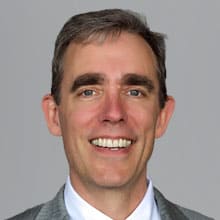Inside Angle
From 3M Health Information Systems
Why do we continue to make patients wait?
Everywhere you look in health IT news, you’ll find headlines announcing the latest amazing (potential) results of artificial intelligence (AI), machine learning (ML), etc. As we explore these new horizons, we should keep an eye out for studies calling out unintended consequences.
Michele Samorami and colleagues published a study worth noting titled “Overbooked and Overlooked: Machine Learning and Racial Bias in Medical Appointment Scheduling.” They point out one of the weaknesses of AI systems: If there is bias in the data used to develop the system, the results will reflect that bias.
In addition to the bias noted in the title, part of what continues to irritate me is the widely held assumption that waits and delays are unsolvable. The very system described in the study was designed to optimize the time of clinicians at the expense of patients. With rare exception, making an appointment to see a clinician is a miserable experience. Because this miserable experience is so ubiquitous, I will not waste your time describing something about which you are probably intimately aware.
In a time when we are working to improve the patient experience of care and when “net promoter scores” are all the rage, we continue to use “wave” scheduling. In wave scheduling, a number of patients receive the exact same appointment time and have to cool their heels while the office works through the wave.
I had the opportunity to work with Mark Murray and Catherine Tantau as they introduced us to the queuing theory, backlog reduction and other improvements. In my own practice, as well as others at the University of Rochester, we achieved “your provider can see you today if that works for you.” This took work, data and diligence, but we and many others did it. In 2000. Twenty-one years later we’re still delivering appointments in an outmoded model that is frankly disrespectful and harmful.
Harmful because there’s good data that when we cause people to wait for care, some will fail to follow through even at the cost of their future health and well-being. Harmful because delays in diagnosis and treatment can be bad for people.
We have much better data and tools than we did in 2000. We can simultaneously reduce waits and delays and improve efficiency without adding stress to providers. We can do so much better than we are doing, if we want to. All it takes is the will to change, leadership to support the change, willingness to adopt new ideas and implementation science.
Dr. Gordon Moore is senior medical director, Clinical Strategy and Value-based Care for 3M Health Information Systems.


